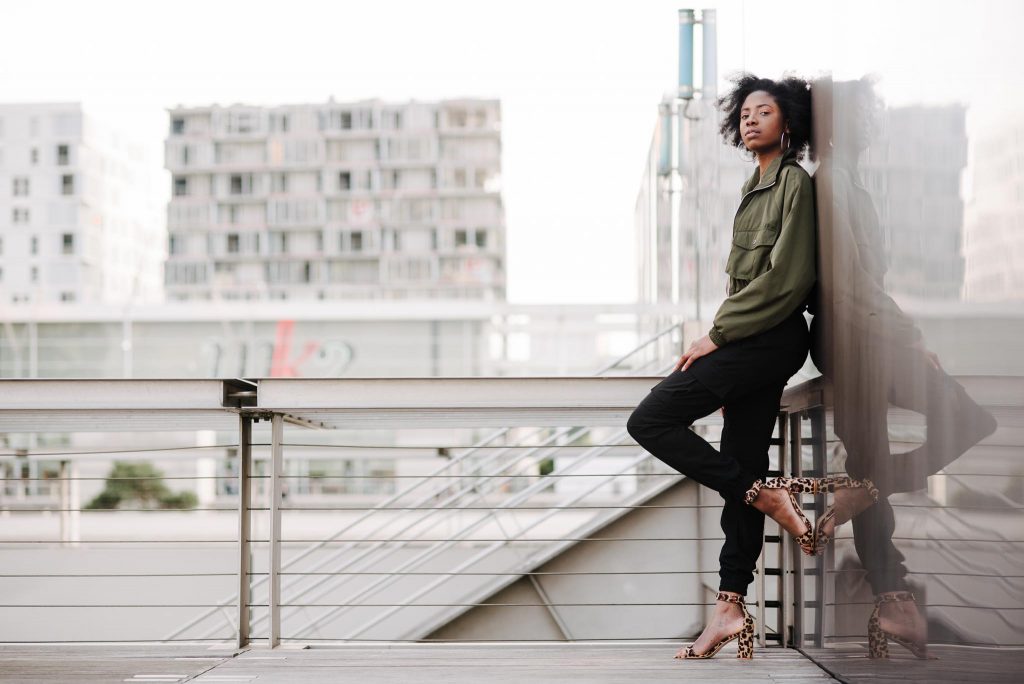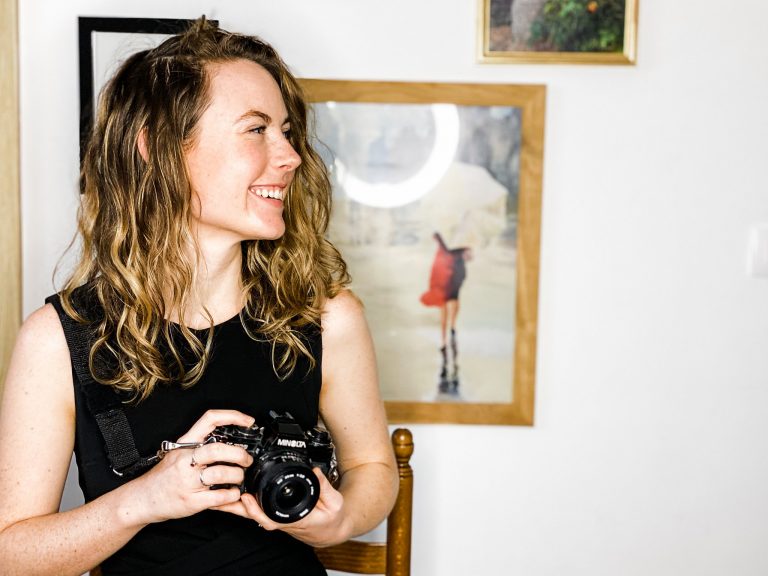Ask Paige: What Lens Should I Buy?
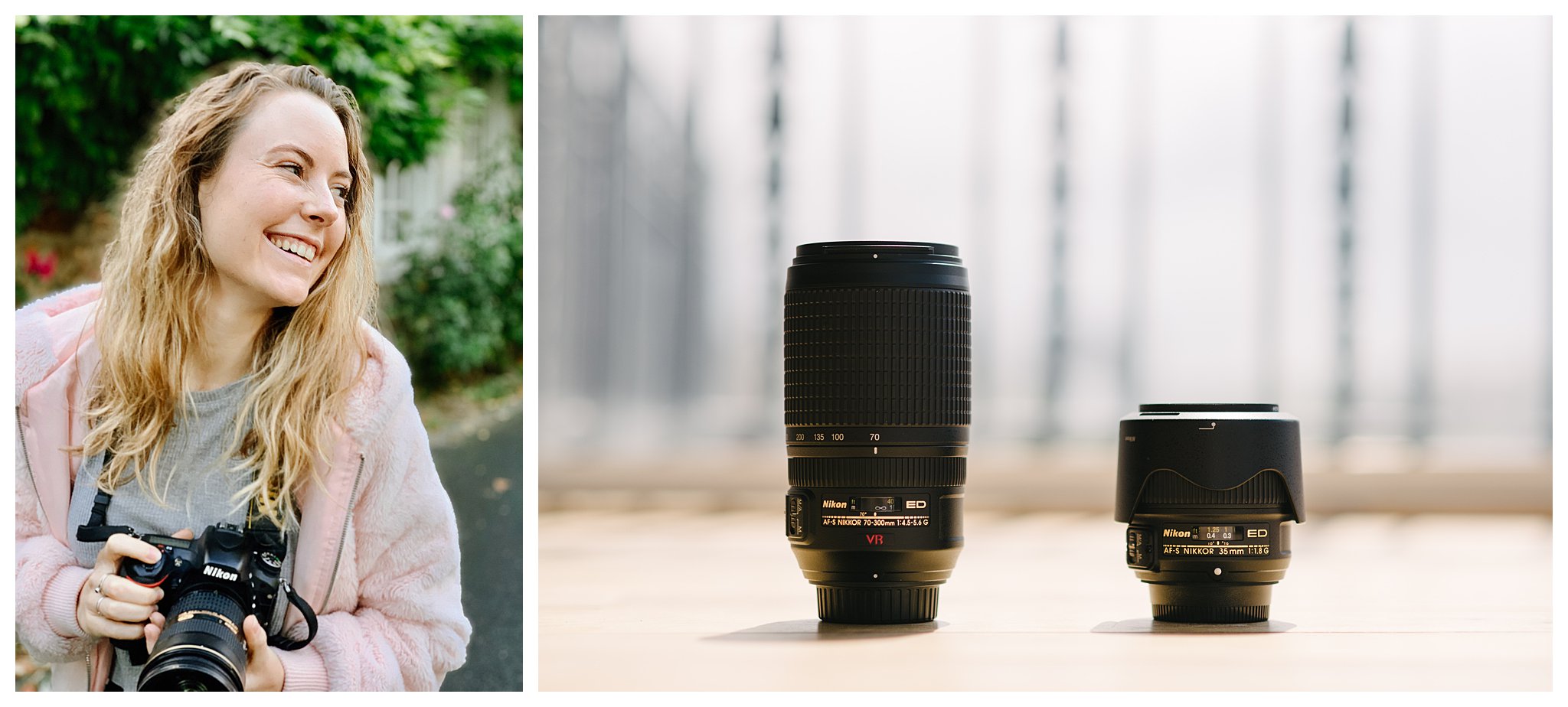
Phew—this is a long one! Want to skip around?
- See what’s in my lens kit
- Lenses for full-frame vs. crop sensor cameras
- The quick and dirty on focal lengths
- Prime lenses vs. zoom lenses
Lenses I use for…
Psst! Some of the links in this post are affiliate links. This means that if you click on a link and purchase an item, I may receive a commission at no extra cost to you. All opinions are my own. Thank you for supporting my work!
How I choose what lens to use for a photoshoot
Technology doesn’t make the photographer, but a good photographer knows how to make technology choices that make their work better. The questions I get the most from beginner photographers are all about gear: What camera should I buy? What lens should I buy?
The gear question I get from photographers who have gotten a good grip on the basics but still are still looking to learn (aren’t we all?) is: What lens did you use for this photo? Or maybe more broadly: What’s the best lens for xyz?

The lens you choose for your photography can make a big difference.
Picking what lenses to bring depends so much on a photographer’s personal style and goals for a given shoot that it’s impossible to answer once and for all. But it’s a question I ask myself all the time on a shoot-by-shoot basis. And I’d love to walk you through how I answer it for myself.
But first, a disclaimer!! You can TOTALLY take beautiful photos with whatever lens you put on your camera.
You almost definitely do not need a full-on kit like mine, especially if you’re just starting out with photography. I certainly didn’t have this many until I made it my full-time job!
If you’re trying to pick a first lens to buy, give this a read-through for information, and then either choose your lens based on the kind of thing you’re most interested in shooting (if you’re sure about what that thing is), or choose a versatile lens that will grow with you and that you can learn from.
Depending on your priorities, I would suggest either the kit zoom that comes with your camera, or a prime lens: a 35mm or 50mm equivalent lens (depending on your camera) is a great one to learn with and will give you beautiful images.
Phew! That’s out of the way. Now let’s get to the info.
What lenses do I keep in my lens kit?
At the time of this writing, I have more lenses in my Nikon kit than I feel like counting right now—let’s call it 10ish lenses. Some of them are fun to play with but aren’t the quality I need for a professional shoot (I’m looking at you, dear manual-focus 40mm prime lens from a consumer-level Nikon product line made in the early 90s). Some are lenses that I’ve bought higher-quality versions of but haven’t sold yet because I’m both a maximalist and extremely sentimental about my things… you get the point.
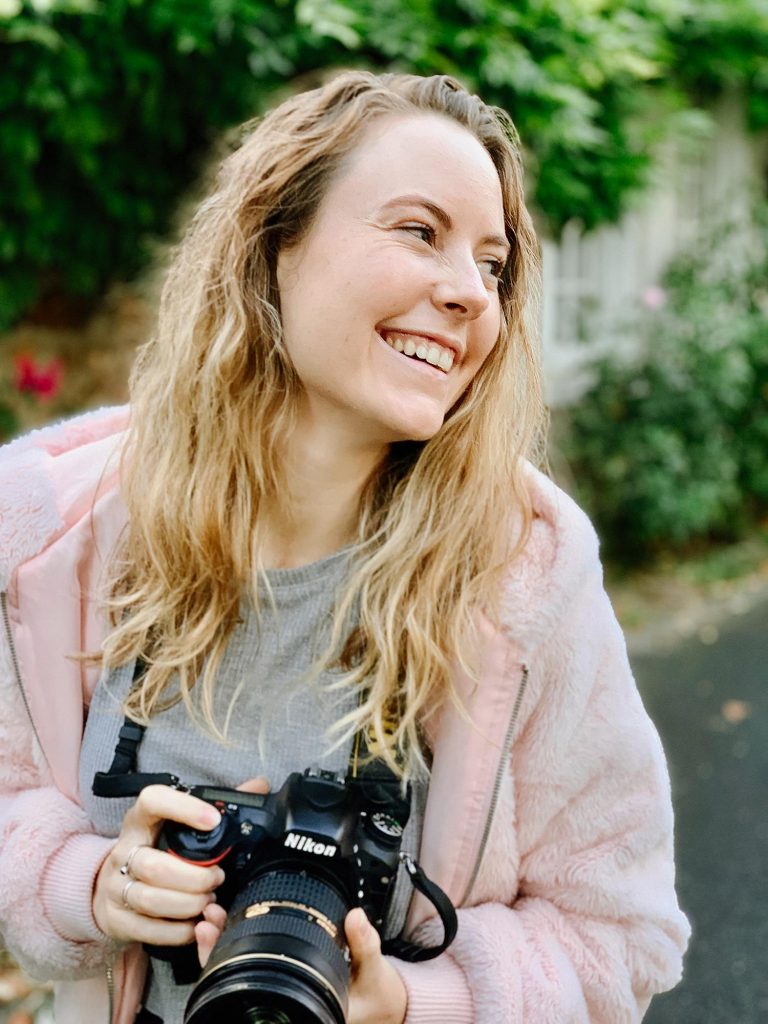
I have 6 lenses in my heavy rotation right now:
Prime Lenses
- Nikkor 35mm f/1.8
- Nikkor 50mm f/1.4
- Nikkor 85mm f/1.8 (note: mine is an older version of this linked lens, with an aperture ring. If you find a secondhand one somewhere, know that I love it!)
Zoom Lenses
- Nikkor 16-35mm f/4 VR
- Nikkor 24-70mm f/2.8 (note: I have this one without Vibration Reduction, and it’s great, but now that I’ve used it a lot I totally wish I had sprung for the VR when I bought it. It’s on my to-upgrade list now!)
- Nikkor 70-300mm f/4-5.6 VR (I do have the VR version of this one. 100% worth it!)
This 6-lens kit gives me options, and I like options. Here’s what I love about this selection: 1) It covers pretty much the full range of focal lengths I’m likely to need for the pretty wide variety of things I enjoy shooting. And 2) it lets me choose whether I want more prime or more zoom lenses for a given shoot.
Lenses for full-frame cameras vs. crop sensors

Keep in mind that I buy these lenses for my Nikon D750, which has a full-frame sensor. So these lenses and the choices I make with them refer to full-frame cameras (of any brand). If you’re shooting with a beginner or intermediate-level DSLR, chances are you have a crop sensor on your camera.
Basically, crop sensors look through the middle section of a lens, so a 35mm lens will look more or less like a 50mm lens if you put it on a crop sensor camera. (It will still be called a 35mm, though.) A 50mm lens on a crop sensor will behave more or less like the 85mm does on my camera. My 85mm would look like a 135mm lens with the crop. To get the results I get on my 35mm, you would need something like a 20 or 22mm lens.
A quick note on focal lengths
Longer focal lengths can get you closer to the action. If you’re a photographer that loves shooting subjects you can’t get super close to, that alone might be a reason to choose a longer lens. There’s a reason that wildlife and sports photographers spend a lot of time with huge telephoto lenses.
But that’s not the kind of photography I do: I photograph people, places, and inanimate objects, which means that usually (not always) I get to factor other things into my lens choices, too.
The real joy of having a variety of focal lengths isn’t (just) that longer focal lengths make it feel like you’re closer up, it’s that they can change the feel of the photo.
Shorter focal lengths make things in your photo seem further away from each other, not just from you. (Fisheye photos are an extreme example of this.) Longer focal lengths make it look like everything in your photo is closer together—telephoto lenses can bring faraway backgrounds right up close to your subjects in the foreground.
(Psst! Click here to see this effect in action with the Eiffel Tower.)
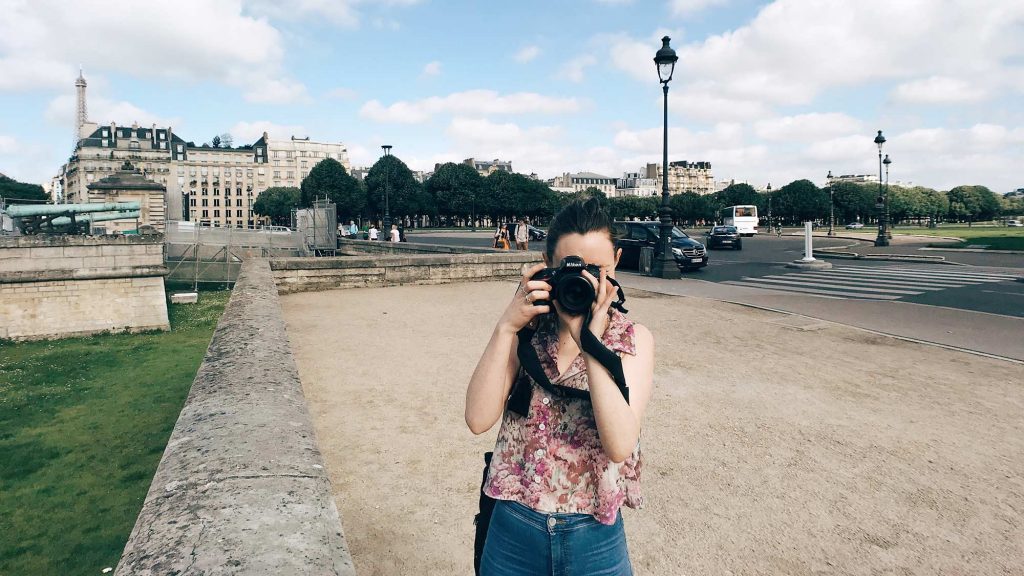
How can you use that information in real life? For one thing, the wider the angle, the more context you’ll get: if you want to give the view a feel for the location, you might reach for your 35 before your 85.
I also find that wider lenses give an edgier, more editorial feel to photos, whereas longer focal lengths will give you a bit more of a dreamy quality. Plus, they’re more universally flattering for things like portraits or closeups.
If you’re a bokeh person and you like to shoot wide-open, that’s also something you can and should take into account: Longer focal lengths blur backgrounds more and can create some beautiful bokeh effects.
Prime vs. Zoom Lenses

A quick refresher: a prime lens has a fixed focal length. That means you can’t zoom in or out; you have to physically move your feet. A zoom lens, well, zooms.
Zoom Lenses
Most camera beginners know their zoom as a way to get closer to their subject without having to move. And it is that, partly.
Unless you took photography as a class in high school or college, or learned with an older generation of film cameras, the camera you started out with—heck, the camera you have and use now—probably came with a zoom lens already attached. Or maybe it had a digital zoom (which is basically a lie, by the way: it doesn’t zoom, it crops the photo so the subject takes up more of it. That’s why the quality of your zoomed-in iPhone photos looks worse—because it is).
Anyway! You can use your zoom lens for that, and I do sometimes. It’s great for photographing something like an event where I have to capture the exact right moment from wherever I happen to be standing. But…
The big reasons I’d choose a zoom lens are:
- When I want to be able to get a good amount of variety in my shots while working quickly and/or carrying less weight around, and
- To access a range of focal lengths, especially ones that I don’t use often enough to justify buying a standalone lens for.
200mm is gorgeous for portraits, but it’s not a lens length that I would want to take the time to change to during a shoot and take more than a couple shots. 16mm is beautiful too, but I’m rarely taking more than one or two 16mm shots at a time.
For portrait shoots, it’s nice to be able to quickly jump from a close-up, blurred-background 200mm back to 85 for a shot with a little more context. For destination photography, architecture, and interior shots, I love being able to get a super-wide shot and then quickly get back to a more normal length, like 35mm.
Prime Lenses
So if zoom lenses have all these conveniences, why would I choose a prime lens? Why ever use a 35mm prime lens if I could just use a zoom lens that includes a 35mm focal length? Why bother with my 85mm at all?

Prime lenses have three major advantages:
- Generally speaking, they can open up wider and capture more light than zoom lenses can. If you’re in low light, the couple of extra stops you get can make a huge difference. If you’re a bokeh junkie, you’ll fall in love.
- When you look at the photos at the all-the-way-zoomed-in pixel level, prime lenses get crisper, sharper images than my zoom lenses ever could. Is this the most important thing? No! But is it something I prefer when I have the option? Yes. You will probably never look at a photo at a 100% pixel-to-pixel size. I certainly don’t once I’m done editing. But when I’m editing, I’m a pixel peeper. Sue me.
- And above all else: They force me to make more conscious choices about the feel and composition of my photos. If I pick, say, a 35mm lens, I’m choosing the mood I want the photo to have, and then I’m forcing myself to move my feet to compose in a way that suits that lens length. If you have the time and the ability to move around relative to your subject, this is makes for much more purposeful photography than standing somewhere and then picking a lens length based on where you are relative to your subject.
Okay, Paige, but what lens should I buy?! And/or which lenses should I choose for my shoot?!
It depends on what you’re doing! I usually bring more than one with me to professional shoots, so I can switch it up and have options.
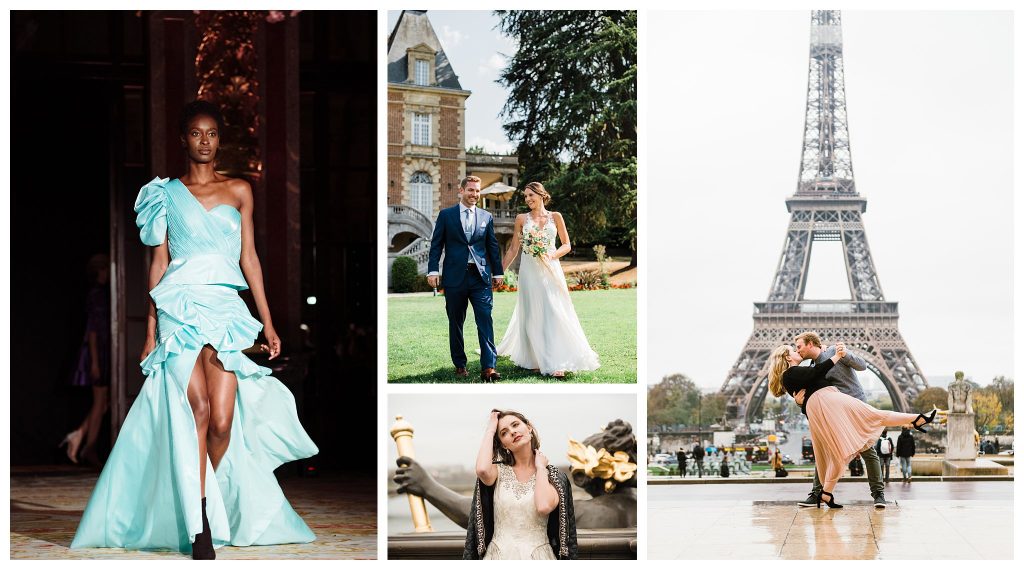
Here’s what I’m bringing with me for…
A lifestyle shoot with models and products:
Depends on the style of the result we’re going for! My 50mm is a great workhorse for this. My 35mm lens is my baby, especially if I’m trying to get wider shots that show more of the location and context. I mayyyyybe will bring my 85mm, but honestly I’m unlikely to use it for more than a couple shots.
If I can shoot with primes here, I will. But I’ll probably have a zoom or two in my bag too, because you don’t always know what you’ll decide you absolutely need to shoot until the moment and/or inspiration hits.
A product-only lifestyle shoot:

It depends on the product, but in general: definitely the 50mm and probably the 85. Maybe the 35mm if I want them to feel more like a part of the place. Maybe the 16-35 zoom if I want a more adventurous or edgy vibe. Or the 70-300 zoom if I want them to be the main and maybe only focus in my shot.
Fashion photography:
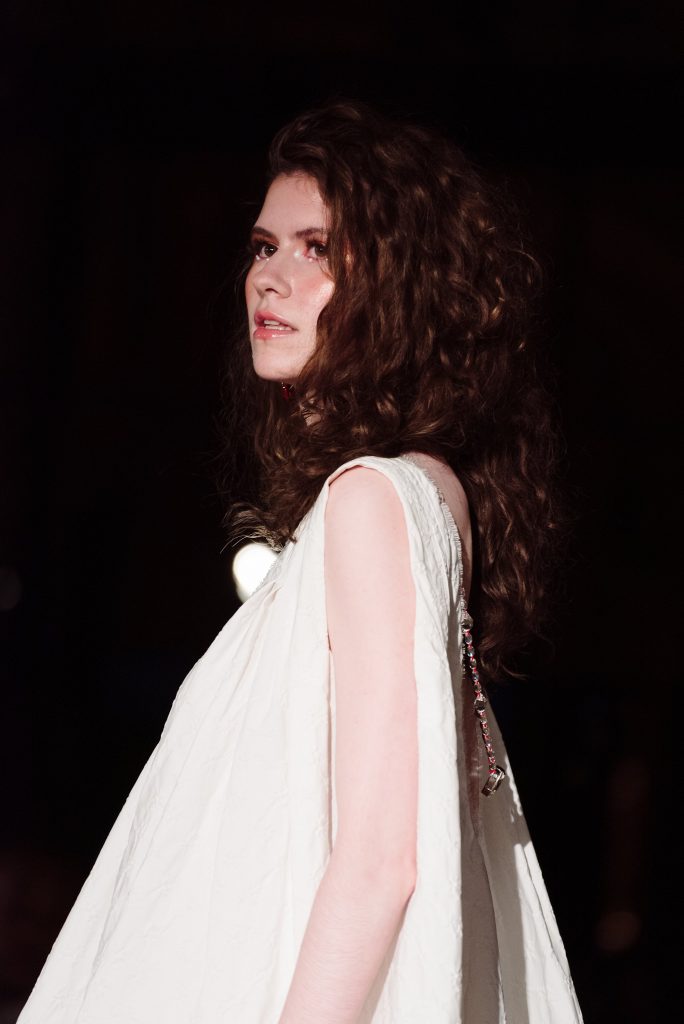
If it’s a studio or outdoor shoot, I’ll likely bring my 35–50–85 prime lens trifecta, plus my 70-300mm portrait lens, but I’m probably mostly using my 35mm and my 85mm, and switching to my 70-300mm every so often.
If we’re talking faster-paced, fashion photography like what I do during Paris Fashion Week, I’m probably walking around with my 70-300. Or if it’s just for me and I want to challenge myself, maybe I’ll see what I can do with just one lens, like just my 50 or just my 85. But for something like fashion week where you just get one shot, that can be risky!
Paris portrait photoshoot:
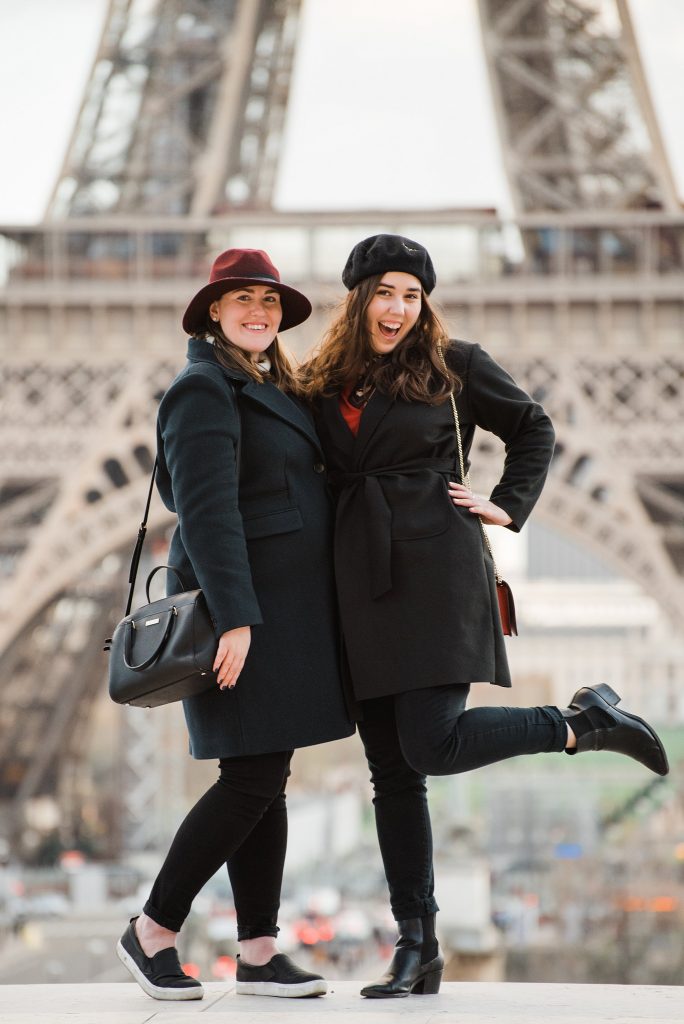
If we’re doing the classic Trocadero photoshoot with the Eiffel Tower, I’m not leaving the house without my 70-300 zoom! My wider-angle choices have been shifting a bit lately: I used to bring my 50 and 35, but with my newest kit addition of a 24-70 mm, lately I’ve been preferring to bring that zoom instead! Depending on where and what time of day we’re shooting, I’ll make some executive choices that allow us to get the best shots we can in the smoothest (and most fun) way!
Elopements, vow renewals, and weddings:
Here, again, my 24-70 has been starting to replace my 35 and 50mm. I’m not committing to that forever, but that’s what I’ve been doing lately and it feels great! I’ll also have my 70-300 with me, of course. Probably not the 16-35 unless we’re going somewhere that I feel requires it. Mayyybe the 85mm if it feels like that kind of day. And I’ll definitely have more primes in my bag if you’re doing an evening ceremony!
Destination photography:

I like to travel light, so unless I’m planning a shoot wherever I’m going, I usually only bring one lens. It’s usually my 35 prime or a zoom—either the 24-70 or my 16-35, depending on how I’m feeling and where I’m going. Occasionally I’ll opt for my 50mm instead, or throw in my 85mm if I have extra space in my suitcase (but I usually don’t).
Interiors, architecture, and real estate:

The 16-35mm is my holy grail for this! Mine has vibration reduction, which is great for darker spaces. I’ll probably bring along another lens (50, 85, or 24-70, depending) for detail shots, too.
Wandering around Paris with a camera in my purse:

Almost always one of my prime lenses. Chances are good it’s my 35mm lens, but I might be feeling the 50mm that day. You might catch me with the 85 or the 16-35, though, depending on what my plans are.
Night or low-light photography:

Especially if there are people involved, I’ll be choosing between my prime lenses depending on what I’m shooting, because they do much better in low light! If I’m shooting objects or locations that will stay still, I might go for my 16-35, since it has great vibration reduction for low shutter speeds.
If it’s somewhere I can use a tripod or a flash, I end up with more options to work with! But either way, I will always want something in my bag that lets me shoot handheld and with no flash, just to be safe.
Did this help you choose a lens? Are your go-tos different from mine? Are there photography situations I haven’t covered, or questions you need answered? Leave me a comment and let me know!
